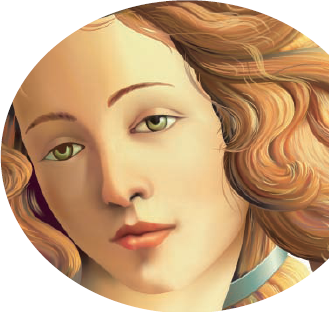Chapter 2. Following the Righteous Path
In This Chapter
Understanding how paths and pixels work
Knowing the differences between paths and pixels
Determining when to use paths and when to use pixels
Using PostScript printing and paths
Creating paths
Being new to Illustrator typically means being new to paths. Paths are the heart and soul of Illustrator — its primary way to create graphics. Nearly all computer-generated graphics are either pixel-based or path-based (also known as vector-based — more on that later). Getting a firm grip on the differences between the two graphics types can help you create graphics of any type.
Pixel-based images (created in Adobe Photoshop as well as by scanners and digital cameras) use a fixed grid of tiny colored squares (kind of like tiny mosaic tiles) to create images on your screen. Your computer monitor's resolution is a measure of how detailed an onscreen image can be, based on how many pixels the screen can provide per square inch. To give you an idea of how small these pixels are, every square inch of an average monitor contains as many as to 9,216 pixels. Even so, monitors have a relatively low resolution; they don't use many pixels per inch compared with high-resolution printing, which can require 90,000 pixels in a square inch or more.

In spite of their astonishing quantity, pixels work just like mosaic tiles (or like the dots in a Seurat painting). ...
Get Illustrator® CS4 For Dummies® now with the O’Reilly learning platform.
O’Reilly members experience books, live events, courses curated by job role, and more from O’Reilly and nearly 200 top publishers.

